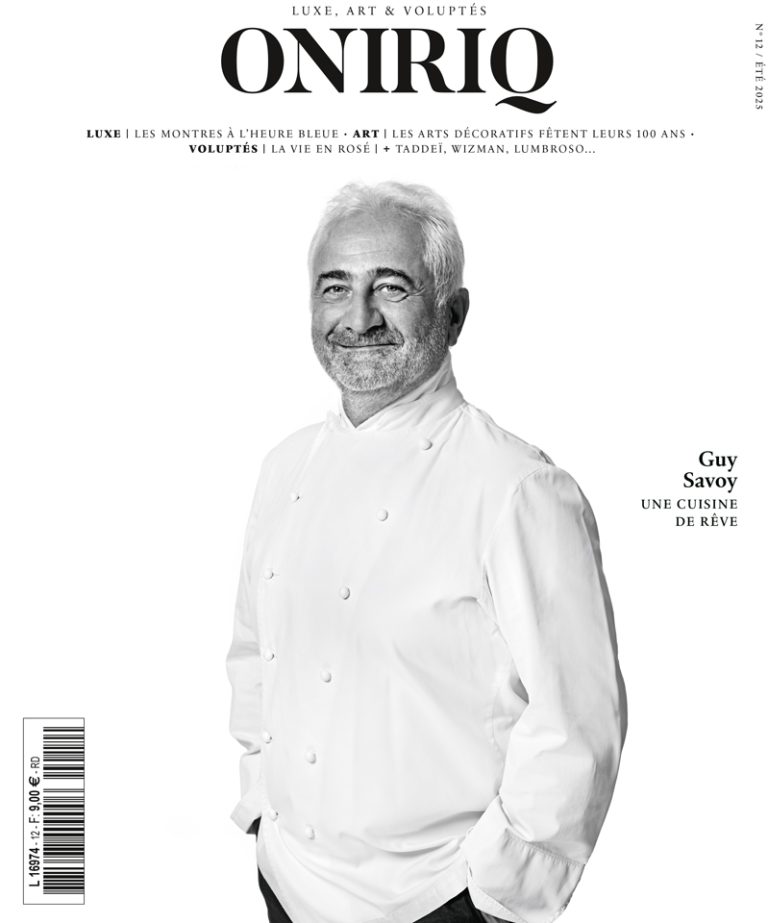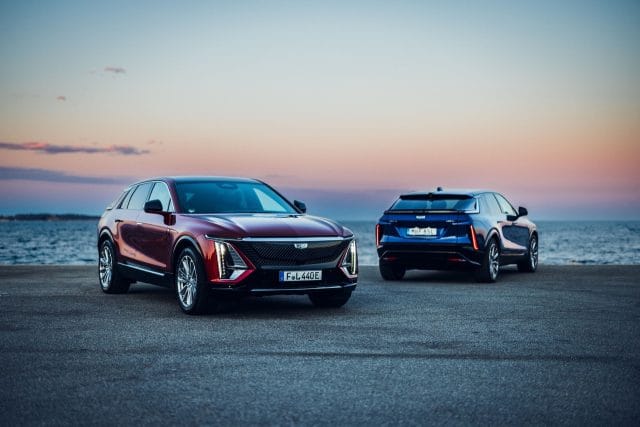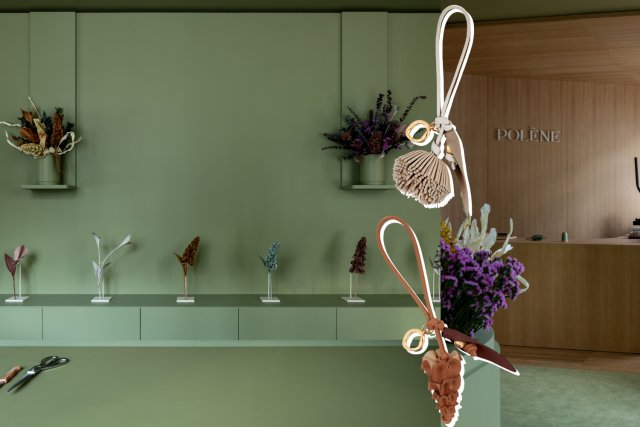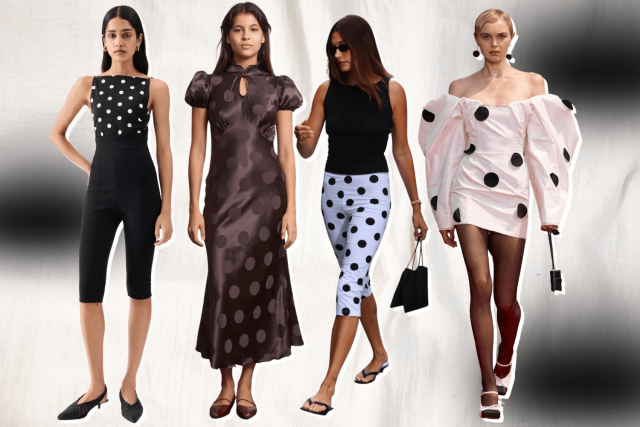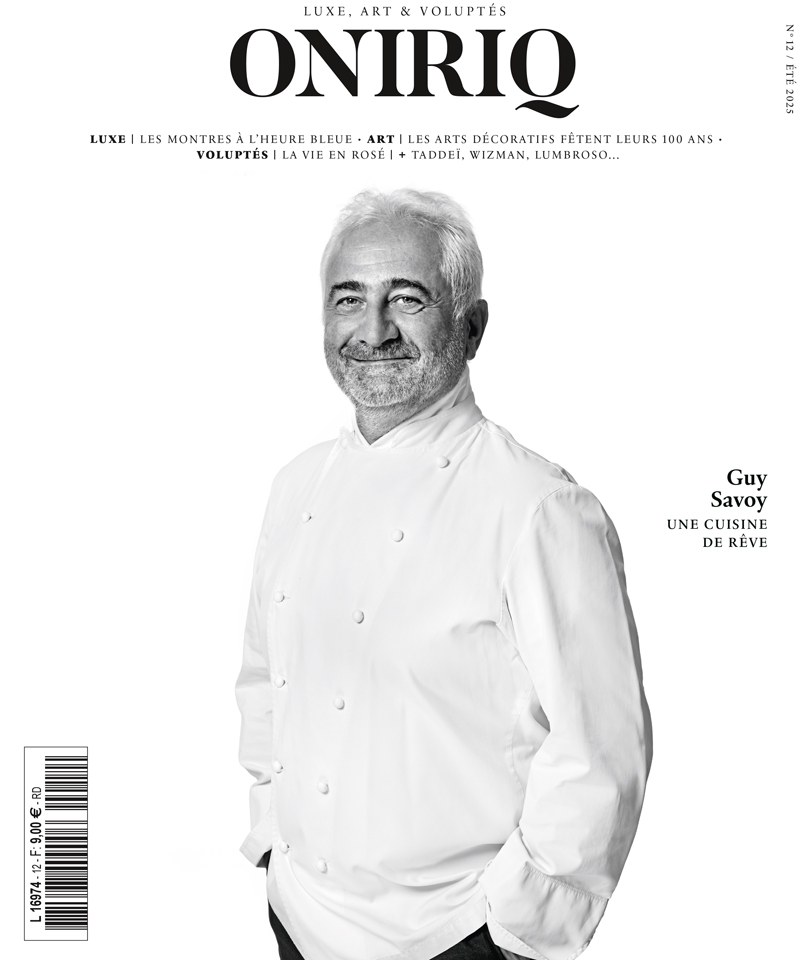Translated by Bethszabee Garner
What if a car could tell a story before even starting? For Magalie Debellis, head of design for the Cadillac LYRIQ, that was precisely the ambition behind this strategic model: a 100% electric SUV marking the American brand's grand return to Europe.
Designed from the outset as a visual manifesto, the LYRIQ catches the eye from the very first glance. Its taut, precisely sculpted silhouette seems to be animated by a contained energy. The signature lighting, composed of more than 700 LEDs, activates as the driver approaches in an almost choreographed sequence. The design isn't just for show: it interacts with the technology.
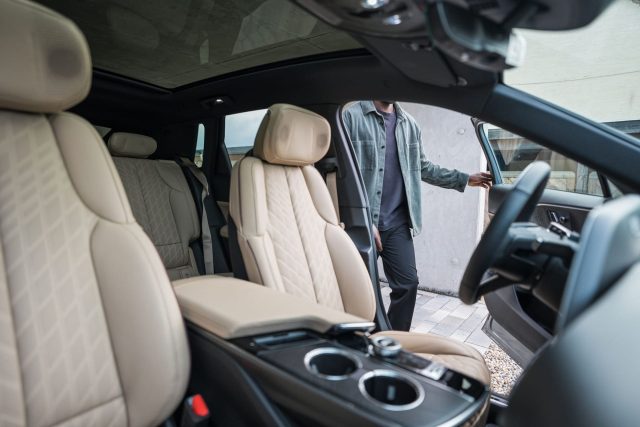
And behind the aesthetics, the technology keeps pace. The LYRIQ is based on General Motors' Ultium platform, a 100% electric architecture that offers a claimed range of 530 kilometers and fast charging from 10 to 80% in around 40 minutes at a DC charging station. Inside, the atmosphere is chic and minimalist: a large 33-inch curved screen dominates the dashboard, while the 19-speaker AKG audio system transforms the cabin into a sound bubble, isolated from the outside world.
Between European inspiration, attention to detail, and American DNA characterized by boldness and verticality, Magalie Debellis takes us behind the scenes of a design created to make as much of an impression on the mind as on the road.
Sirine Errammach: How would you define your approach to automotive design?
Magalie Debellis: Every project starts with an intention. For me, design is above all a vehicle for emotion. It has to tell a story from the very first glance, long before we talk about lines or proportions.
What guides you first: a line, a feeling, a memory?
M.D: It's often a feeling—an emotion that we want to convey visually. Then come the inspirations: a landscape, tension in a gesture, architecture... Anything that evokes a strong impression.
Automotive design is often dictated by highly technical standards. Where does creative freedom begin for you?
M.D: Freedom begins when we decide what the car should express. Then we juggle constraints and creativity—and sometimes it's the constraints that open up new ideas.
At what point in the creative process for the LYRIQ did you feel that the car had found its visual identity?
M.D: The moment when the silhouette began to take on a real presence, almost musical, was decisive. When the lines found their rhythm, we knew we had something unique.
How would you describe the design style of the LYRIQ?
M.D: A sculptural, taut, fluid design that expresses both technological precision and sensuality. LYRIQ is a statement that is both modern and true to Cadillac's DNA.
The silhouette of the LYRIQ is very assertive, almost sculptural. What were your intentions in creating this visual presence on the road?
M.D: I wanted it to command attention, even when stationary. I wanted it to express sophistication, but also contained power—like a feline ready to pounce.
What does the LYRIQ's design say about Cadillac today?
M.D: It shows that Cadillac remains a brand with character, focused on innovation but true to its codes: verticality, precision, boldness. It's a confident vision of electric luxury.
What design elements did you come up with to create a certain emotion around an electric vehicle, which is silent and almost immaterial?
M.D: Light played a key role—it brings the car to life. We worked on light animations, welcoming gestures, and subtle transitions that create an emotional connection.
What textures, colors, or materials convey the identity of this car?
M.D: Refined materials, contrasting textures, and a subtle interplay between matte and glossy finishes. Together, they create an immersive and elegant atmosphere.
The interior of the vehicle is designed to be a cocoon. How did you approach the relationship between technology and comfort?
M.D: We wanted intuitive technology. The idea was to create a calm, fluid environment where every detail contributes to a feeling of well-being.

How did you work to create a more intimate relationship between the driver and the vehicle?
M.D: We focused on subtle but essential elements: the play of light, soft touch controls, and sound treatment. The goal was to create a subtle but strong connection between the car and its driver.
Did your European culture or sensibility influence your approach to the design of the LYRIQ?
M.D: Absolutely. My perspective is naturally influenced by a certain attention to detail, elegant proportions, and a search for harmony. I believe this European sensibility brings a valuable balance to the LYRIQ's identity—all the more symbolic with Cadillac's return to Europe.

